You may wonder if ANY plants will grow near black walnut trees? Here are 30 plants that will grow near black walnut trees in zone 3.
Black Walnut trees are a special case in the zone 3 gardens. You’ve probably heard that nothing will grow under walnut trees. Walnut roots exude juglone which is toxic to other plants, stopping their seeds from germinating or preventing them from actually growing well. Plants that are sensitive to juglone toxicity may exhibit symptoms as early as a few months after being planted in the proximity of black walnut. Juglone sensitive plants show symptoms of yellowing, wilted leaves, stunted growth, and eventually death. You may wonder if ANY plants will grow near black walnut trees?
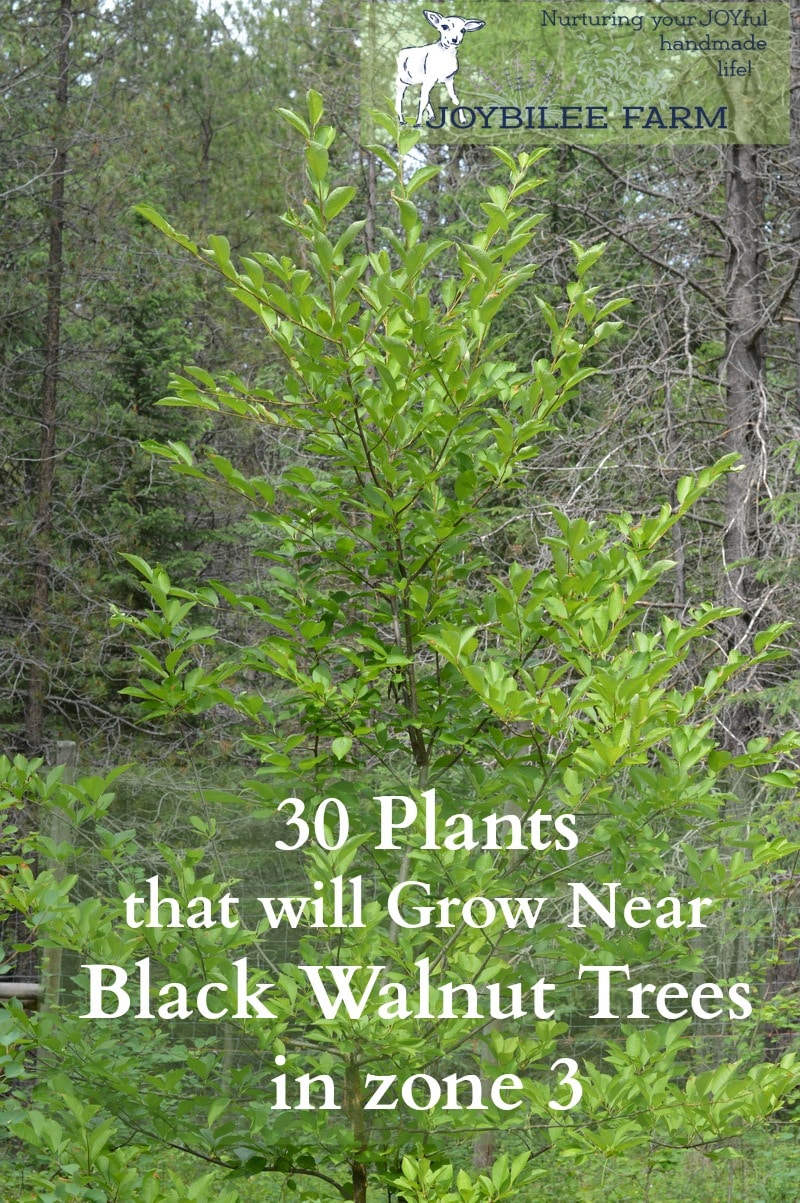
Other trees in the walnut family such as Persian or English walnuts, butternuts, pecans, and shagbark hickory also produce juglone but at smaller concentrations than black walnut. These trees will rarely harm juglone-sensitive plants. Unfortunately, most of these nut trees require a lot more heat than we have in zone 3. Those of us in colder climates are pretty much stuck with black walnuts if we choose to grow nuts in the garden at all.
Why you want to grow black walnuts regardless
- Black walnuts have incredibly beautiful, close-grained, and strong wood for woodturning, for building, and for musical instruments.
- The leaves, hulls, and stems of black walnut are rich in iodine and highly medicinal.
- The nutmeats are high in edible oil, which is useful for cooking, woodworking, and cosmetics.
- The nutmeats are nutritious and considered a superfood.
- The hulls, leaves, and twigs produce a dark brown natural dye that is colour-fast.
- Walnut trees are long-lived and provide shade and habitat for wildlife.
- The roots of walnut trees draw up nutrients from deep in the subsoil, bringing these to the surface where other plants can benefit.
- Black walnut sap can be boiled down into black walnut syrup for a value-added product
While there are a few trees and shrubs that are sensitive to juglone toxicity there are many that are tolerant. With the short zone 3 growing seasons, you don’t want to waste your space on plants that need to be babied. If you accidentally plant the wrong plant near a black walnut, simply transplant it in the spring or fall, when you notice that it’s stressed. Since black walnuts take a long time to mature, some shorter-lived trees might grow well, until the juglone from the black walnut reaches them, giving you a succession of plants in your garden.
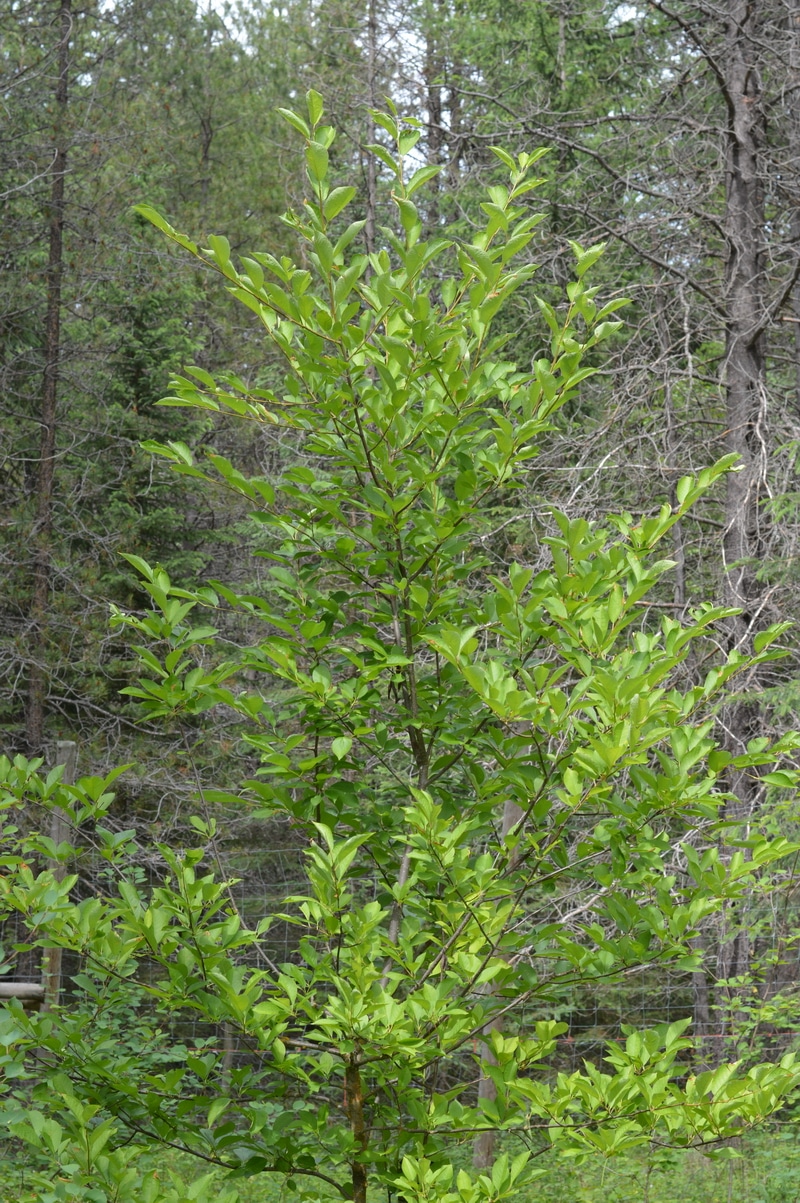
Juglone Sensitive Plants to Avoid in zone 3
Don’t plant these plants within 50 feet of a mature black walnut tree, or within the drip line of an immature black walnut tree. As the mature roots die back they will leave juglone in the soil. These plants should also be avoided if there has been a black walnut planted in the area in the recent past. It takes several years for the juglone to be leached from the soil.
For vegetables and small shrubs, planting in a raised bed can mitigate the juglone toxicity, if all leaves, nuts, and hulls from black walnuts are kept out of the surface of the raised bed.

- Asparagus
- Apples and Crab Apples
- Cabbage
- Potato
- Columbine
- Peony
- Rhubarb
- Blueberry
- Red chokeberry
- Cotoneaster
- Hydrangea
- Lilac
- Viburnum spp.
- White birch
- Hackberry
- Larch
- Linden
- Silver Maple
- Pine spp.
- Spruce spp.
30 Plants That Will Grow near Black Walnut Trees
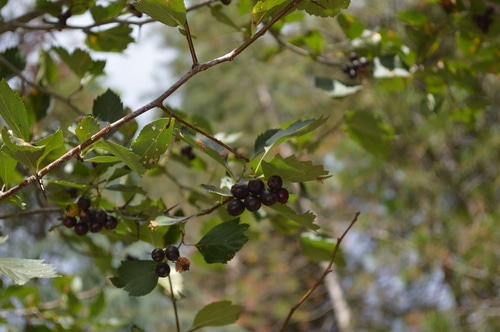
Trees that grow near black walnut
- Most maples except silver maple (Acer spp)
- Eastern Red Cedar (Juniperus virginiana)
- Serviceberry, Saskatoon (Amelanchier)
- River Birch (Betula nigra)
- Black Cherry (Prunus serotina)
- Pear (Pyrus spp.)
- Oak species (Quercus spp)
- Dogwood (Cornus alternifolia)
- Staghorn Sumac (Rhus typhina)
- Hawthorne (Crataegus spp)
- Arborvitae (Thuja occidentalis)
- White Ash (Fraxinus americana)
- Honey locust (Gleditsia triacanthos) (nitrogen fixer)
- American Elm (Ulmus americana)
- Blackhaw Viburnum (Viburnum prunifolium)
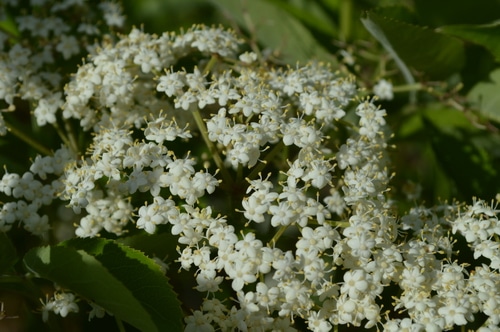
Shrubs that grow near black walnut trees
- Elder (Sambuca sp.)
- Cherry (Prunus sp.)
- Rose (Rosa sp.)
- Pears (Pyrus sp.)
- Plum (Prunus sp.)
- Apricots (Prunus, sp)
- Currants (Ribes spp.)
- Hazelnut (Corylus Americana)
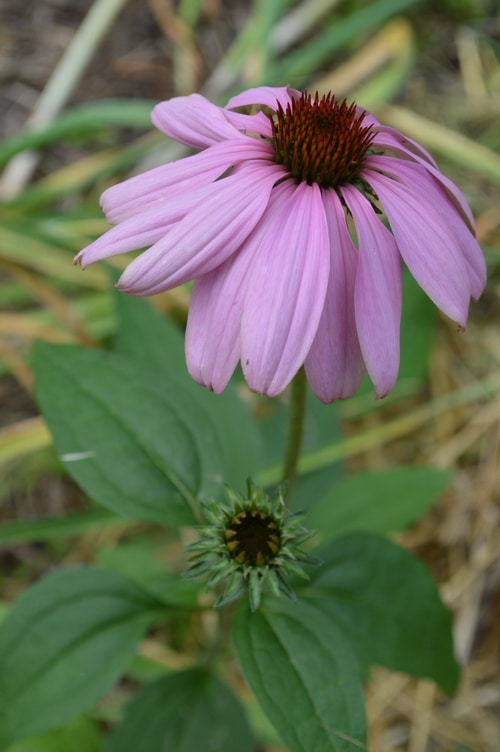
Herbs that grow under black walnut trees
- Coneflower (Echinacea)
- Bee Balm (Monarda sp.)
- Yarrow (Achillea millefolium)
- Calendula (Calendula officinalis)
- Violet (Viola sp.)
- Black Raspberry (Rubus occidentalis)
- Grapes (Vitus sp.)
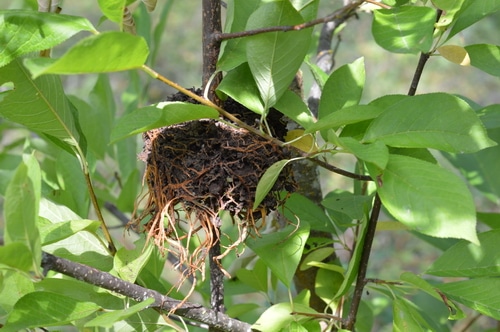
Some plants will grow near black walnut trees, however when planting black walnut trees in an existing garden keep in mind the concept of succession planting. The walnut is a slow-growing tree that won’t produce nuts for 15 years or more. As the tree grows the juglone reach and juglone toxicity will extend. A plan to remove some plants and add others around the planting area of black walnut as the tree expands its reach will give you the highest productivity, in your permaculture garden. If you are working with a smaller space, this is even more important.

In The Suburban Micro-Farm, Modern Solutions for Busy People, Amy Stross points out that walnuts are nutrient accumulators of potassium and phosphorous, making the walnut a treasure in a permaculture garden.
“The nutrients accumulate in the leaves, which will also have accumulated juglone. As the leaves fall, they will fertilize the ground of the juglone-tolerant plants, saving time and money.” (p. 260).
If you are new to permaculture gardening, The Suburban Micro-Farm is a treasured resource to help you find your way, through the permaculture mindset and jargon, and into a productively landscaped yard. Instead of just planting walnut trees, Stross, encourages her readers to plant a “Walnut guild”, a symbiotic grouping of plants that enhance the growth of each other through fertilization, pest control, light and water needs, and root development.
The walnut guild includes small trees, shrubs, and low herbs that are juglone tolerant. As the central walnut tree grows and its shade prevails, some of the guild plantings will die out. Other plants will thrive from the increase in phosphorous and potassium from the dropped leaves. This is the expected succession.
Stross suggests, “…cherry, pawpaw, persimmon, plum, and quince are all fruit trees that will grow comfortably underneath the walnut. Farther out from the smaller trees try planting shrubs: black raspberry, currant, elderberry, hazelnut, mulberry, or spicebush. Underneath all of the trees and shrubs can be planted an array of juglone-tolerant herbs for attracting pollinators, deterring pests and wildlife, and fertilizing: alliums, bee balm, dandelion, purple coneflower, white clover, and violet.
The black walnut guild will go through succession, meaning, it will change as the young plants mature, grow taller and fuller, and interact with one another at the root level. Some of the plants may die out as the larger plants cast more shade, while others may struggle with increasing amounts of juglone. This is okay and expected. Rather than expending extra energy to save unhealthy plants, observe and support (and perhaps even plant more of!), the remaining plants that thrive. Focusing on what thrives is an important tool in the permaculture toolbox.” – The Suburban Micro-Farm, Amy Stross
While the whole book takes the reader on an educational tour of growing permaculture, edible landscape on a small lot, Stross’s own property is just one-tenth of an acre, the book is valuable for community gardens, edible landscape designers, and home gardeners. If you have a tough place to plant, like a steep and fragile hillside or a run-down yard, shaded by a mature black walnut, don’t give up on the idea of a productive food and fruit garden. Instead apply some of the lessons in The Suburban Micro-Farm, to bring Eden from the ashes.
The book is not a comprehensive guide to permaculture or edible landscape gardening, however. The Suburban Micro-Farm is an introduction to what is possible both at the city lot level and at the community level. For specifics in your particular plant hardiness zone, expect to consult other gardening books and permaculture books for plant lists that also give plant hardiness information. The Suburban Micro-Farm is a detailed introduction to permaculture for the suburban gardener who wants a more productive homestead.
The Suburban Micro-Farm by Amy Stross is available on Amazon here.
The Walnut trees are already here, now what?
But what if you inherited a black walnut orchard or a single tree when you bought your property? Before you cut down the black walnut tree, there are several options.
- Plant vegetables in raised beds with lots of finished compost that is without black walnut nuts and leaves. The vegetables will thrive if they have enough light to grow.
- Increase the bio-activity of your soil by adding lots of finished compost, mulch, and other amendments that encourage earthworms. Juglone breaks down rapidly in bioactive soils.
- Add a strip of mushroom mycelium between the black walnut and your vegetable garden. Mushroom mycelium breaks down juglone in the soil rapidly.
- Increase soil micro-organisms under walnut trees. Soil bacteria like pseudomonas can consume juglone and decrease its presence in the soil, protecting nearby plants. Avoid sterile soil or chemical fertilizers that may harm soil bacteria. See this article from the University of Colorado for more information on this.
- Plant a buffer strip of juglone resistant plants between the black walnut and your juglone sensitive plants.
Sensitive plants like apple trees may be able to grow near black walnut if these other aspects are attended to.
Of course, I received a preview copy of this book from the author. I was not paid for my opinion. I learned a few things I didn’t know when I read it. I think it’s a useful book for gardeners.
For more information about Gardening in Zone 3:
20 Drought Tolerant Plants for Zone 3
16 Fruit Trees for Zone 3 With Great Tasting Fruit
42 Bee-Friendly Garden Plants for Zone 3 or Higher
42 Plants for Your Edible Landscape in Zone 3 or Higher
5 Bee-friendly Perennials for Your Zone 3 Garden
Planting an Herbal Tea Garden that Thrives in Zone 3
Grow Rosa Rugosa Roses for Fragrance and Rose Hips, Even in Zone 3



Hello — this is good info on the Black walnut, but the tree in the blog post is not a Black walnut. Might be confusing to some.
Plant wine cap mushrooms in the drip line of the walnut. They consume the juglan and will remediate your soil. They also rid the soil of nematodes which is great for vegetable plants. After a couple years you should be good to plant anything in the soil again. Winecap mushrooms are edible. Here’s a tutorial to help you get started: https://joybileefarm.com/wine-cap-mushrooms/
In that 70s a walnut tree black planted itself within a foot of my front of my house last week in 2022 we had to take it down it was all dead it was 75 feet tall so many things have died my birch clump and a huge maple both of them big over the years have died and now I realize it’s from that tree What I’d like to know is are the roots beneath the soil still toxic enough so that I can’t plant another tree 15 feet away I wanted to plant another Birch clump but I guess that’s out of the question I’m trying to figure out what I can plant thinking that the roots might still be toxic Please help. I live in southern Wi. Zone 5 , I believe Sandy
Joybillie,
I am not sure if you still get notified about posts or not but I wanted to let you know that I am in Zone 4A they say and am way South EASTERN MN on the WI border across the Mississippi and we have grown a Butternut Tree successfully~
It was quite hard as it kept getting limpy on us and weak but we persisted and NOW we have Butternut Trees all over the place! (The first one we grew we put too close to the Black Walnut I see now).
I think you may want to give a Butternut a try…I know you are a bit colder but who knows. If you need anything from email me at my email.
Thank you for all you do ~ Now I am going to see what I can use from my Butternut trees~
Ladnea